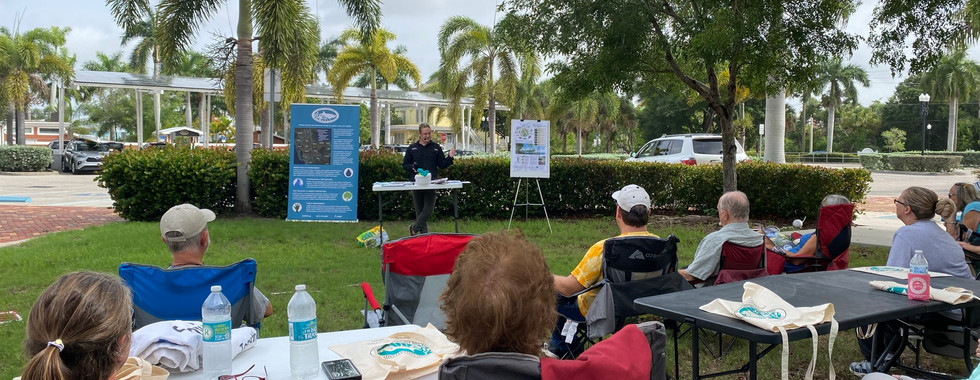Keeping our "Eyes on Seagrass"
- Volunteer Coordinator
- Jun 21, 2021
- 2 min read

CHNEP volunteers participated in an "Eyes on Seagrass" Citizen Scientist program training with Charlotte County Florida Sea Grant! Forest Hecker, Florida Sea Grant Program Assistant, trained over 20 volunteers in one morning to participate in the collection of valuable information about seagrass in Charlotte Harbor!
Seagrasses are submerged flowering plants found in shallow marine waters. Because they use sunlight for photosynthesis, seagrasses require clear water to survive. This makes them a biological indicator of successful water quality practices. Seagrass meadows are the base of the food web that supports manatees, sea turtles, and many different fish species. They provide critical habitat in Charlotte harbor including nursery habitat for 70% of economically and commercially important species of fish, crabs, and shrimp.
Over the past couple of years, there has a been a 23% decline in seagrass acreage in Charlotte Harbor according to aerial surveys done by the SWFWMD. Increased amounts of macroalgae blooms, recent Red Tide events, and Hurricane Irma all play a role in the decline of seagrass. This Citizen Scientist program collects crucial information about the types and abundance of seagrass at multiple different locations throughout Charlotte Harbor. With this information, scientists are able to monitor the overall health of Charlotte Harbor.
In the training, CHNEP volunteers learned to
Identify the different species of seagrass
Lay out a transect line and randomly place a quadrant
Estimate seagrass coverage and contribution by each species
Estimate epibiota (any organism living on the seagrass) density
Estimate macroalgae coverage and macroalgae sample collection
And collection of a sediment sample!
If you would like to learn more about how you can participate, contact Forest Hecker at fhecker@ufl.edu. You can also view training videos by Charlotte County Florida Sea Grant at Charlotte County Florida Sea Grant - YouTube.
































